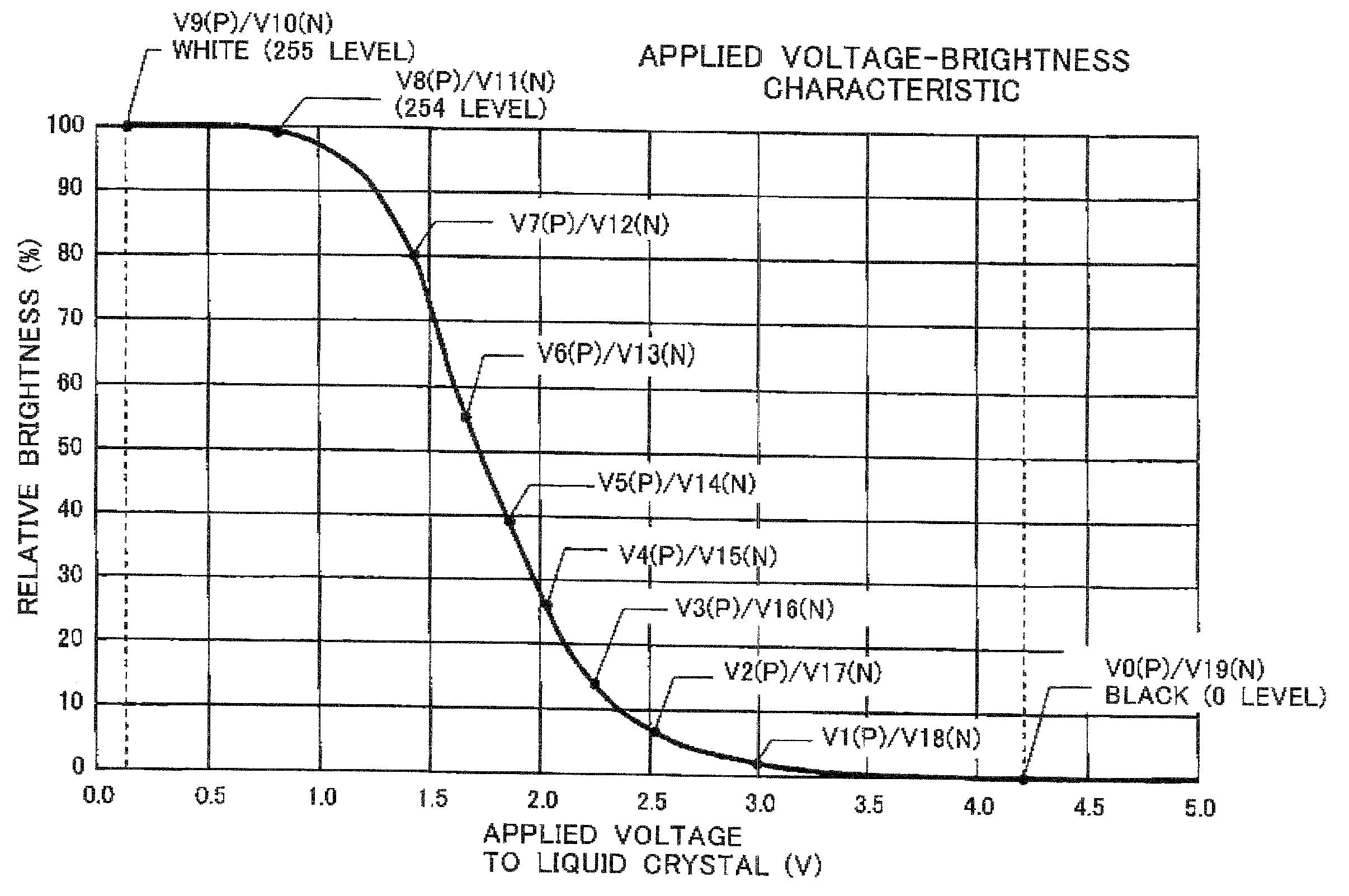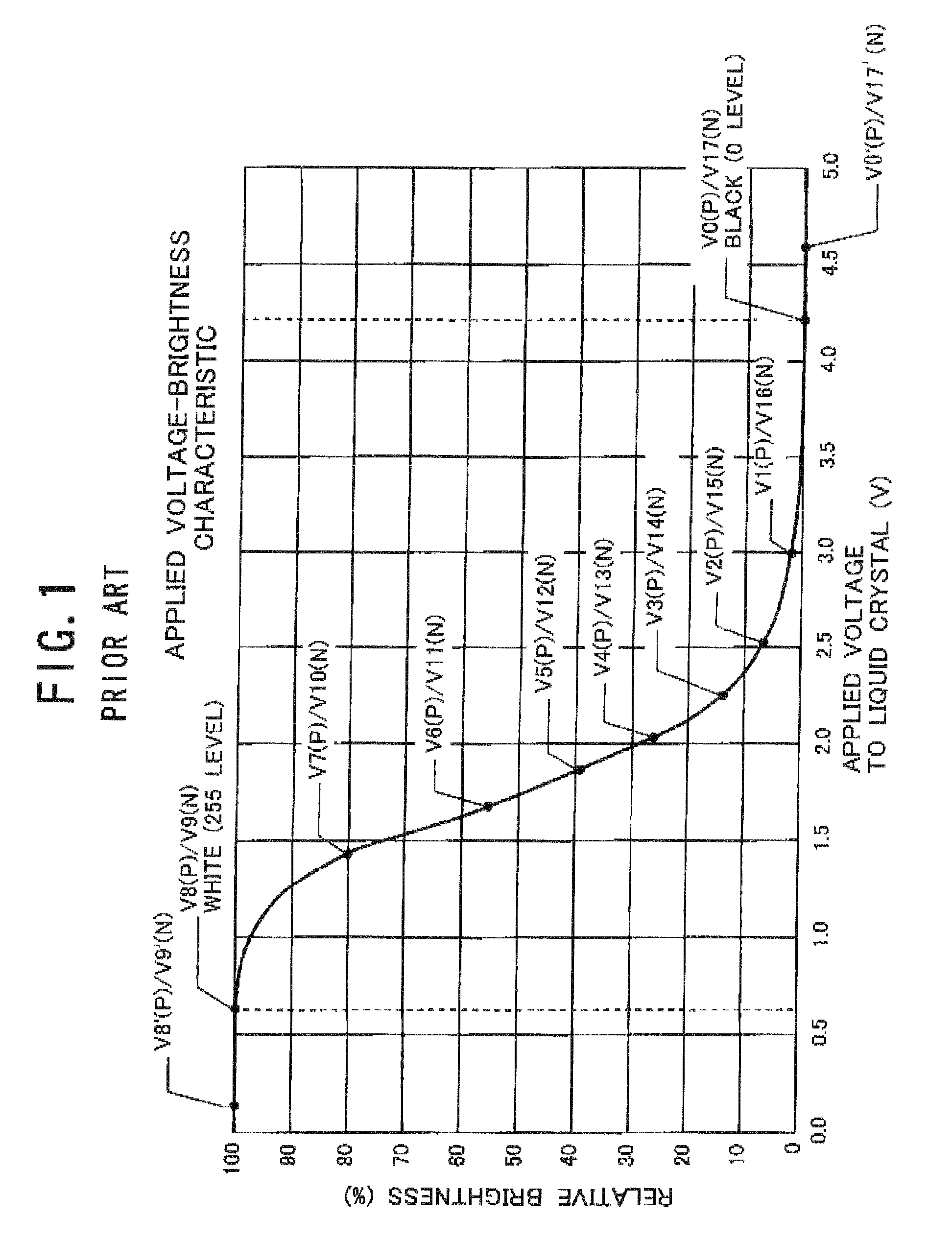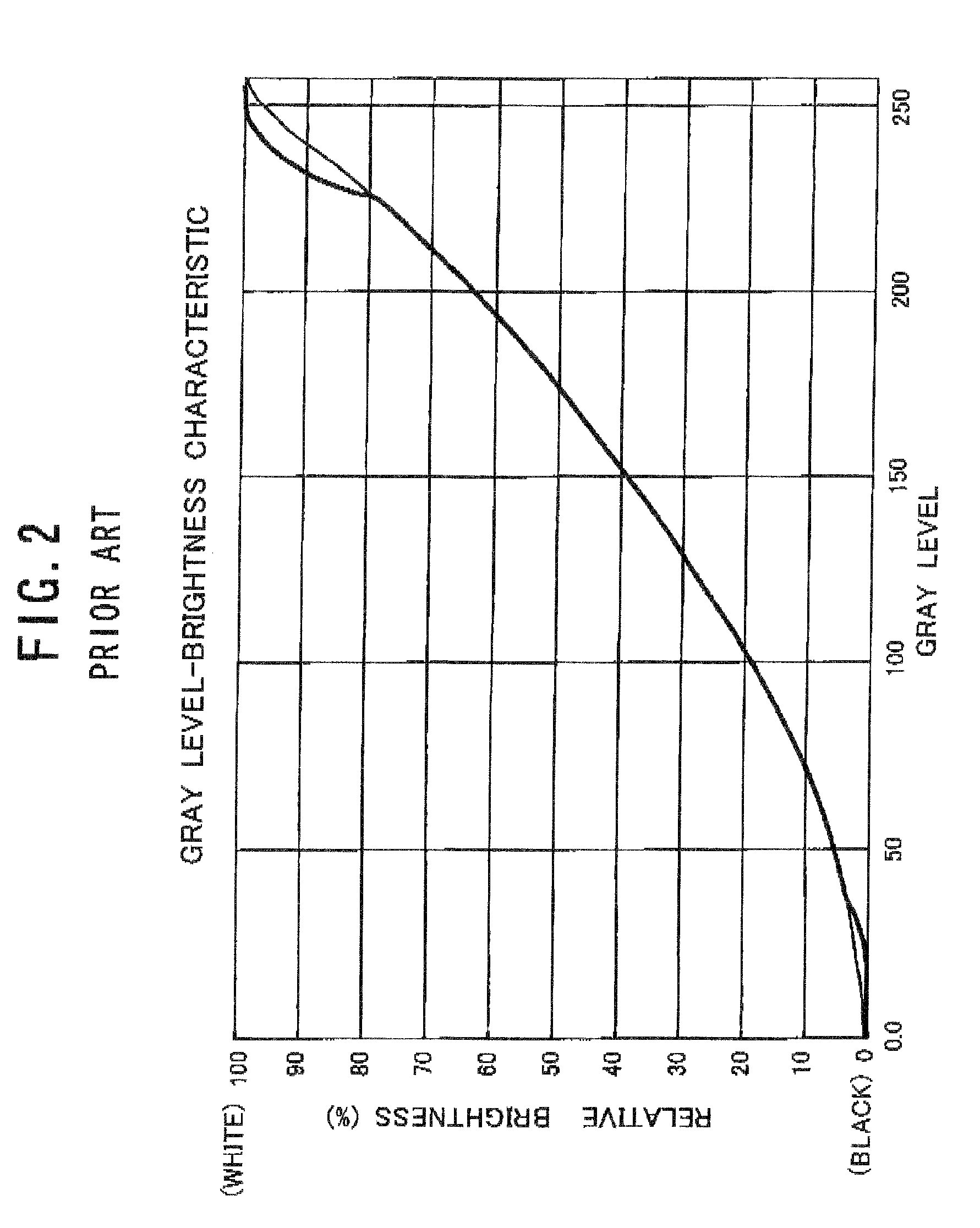Liquid crystal display device
- Summary
- Abstract
- Description
- Claims
- Application Information
AI Technical Summary
Benefits of technology
Problems solved by technology
Method used
Image
Examples
first embodiment
[0094]The applied voltage-brightness characteristic of an active-matrix addressing LCD device according to a first embodiment of the invention is shown in FIG. 6, which operates in the normally white and TN mode. The gray level-brightness characteristic used in this LCD device is shown in FIG. 7. This device displays images with 8 bits on a 256-level gray scale from a 0 level as the lowest level to a (255−1) level as the highest level. Therefore, the gray level number M is 256.
[0095]The LCD device according to the first embodiment comprises a LCD panel 10 as the display section, as shown in FIG. 14. The LCD panel 10 has a plurality of pixels arranged in a matrix array. These pixels are defined by scanning lines 13 and data lines (or signal lines) 14 that are arranged on the panel 10 in such a way as to be intersected at right angles. A TFT 15 as a switching element for driving the pixel and a pixel electrode 16 are provided for each of the pixels. The scanning lines 13 are electrica...
second embodiment
[0120]FIG. 10 schematically shows the front view an active-matrix addressing LCD device according to a second embodiment of the present invention, where the display screen of the said device is viewed from the CF substrate side. This device operates in the normally white and TN mode similar to the above-described first embodiment.
[0121]Generally, an active-matrix addressing LCD device is constituted by coupling a CF substrate and a TFT substrate. In the TN mode, the alignment directions of the liquid crystal molecules on the CF and TFT substrates are regulated by the alignment films formed respectively on these two substrates. Therefore, the liquid crystal molecules are aligned along the rubbing directions of the CF and TFT substrates. Accordingly, the liquid crystal molecules have pretilt angles in the range of 2° to 10° on the surfaces of the CF and TFT substrates. A chiral agent is added to the liquid crystal to twist the liquid crystal molecules along a single direction.
[0122]Wi...
third embodiment
[0146]FIG. 13 shows the applied voltage-brightness characteristic of the LCD device according to a third embodiment of the invention, which is viewed from the front of the said device. This device operates in the normally white and TN mode similar to the above-described first embodiment.
[0147]To display images with 8 bits at 256 gray levels as shown in FIG. 7, reference voltages having 22 levels including the positive and negative polarities (i.e., V0 to V21 in the applied voltage-brightness characteristic of FIG. 13) are applied to the data line driver circuit 12. The data line driver circuit 12 divides each of the spaces among the reference voltages V0 to V21 based on the said reference voltages by a predetermined procedure, thereby generating the output voltages having 256 levels including the positive and negative polarities. Thereafter, one of the 256 output voltages corresponding to the inputted image data is selected for each data line 14, and the selected output voltage is s...
PUM
 Login to View More
Login to View More Abstract
Description
Claims
Application Information
 Login to View More
Login to View More - R&D
- Intellectual Property
- Life Sciences
- Materials
- Tech Scout
- Unparalleled Data Quality
- Higher Quality Content
- 60% Fewer Hallucinations
Browse by: Latest US Patents, China's latest patents, Technical Efficacy Thesaurus, Application Domain, Technology Topic, Popular Technical Reports.
© 2025 PatSnap. All rights reserved.Legal|Privacy policy|Modern Slavery Act Transparency Statement|Sitemap|About US| Contact US: help@patsnap.com



